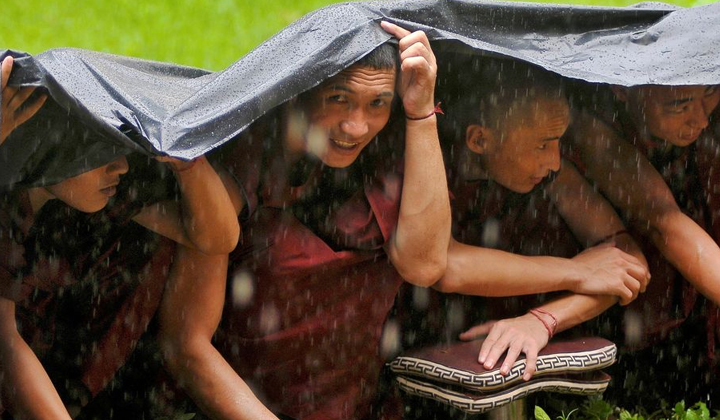Trending Now
- “I will soon make an announcement regarding a statewide tour across Tamil Nadu.” – O. Panneerselvam.
- Vatsala, Asia’s oldest elephant, has passed away at Panna Tiger Reserve; social activists mourn the death of this elephant, which lived for over 100 years.
- “The U.S. Govt earned ₹8 lakh crore this year through increased tariffs on foreign goods.” – U.S President Donald Trump.
- World No.1 Aryna Sabalenka has advanced to the semifinals in the Women’s Singles category at Wimbledon Tennis.
Columns
Rain check: How has this year’s monsoon treated India so far?
![]() July 12, 2016
July 12, 2016
Drought-hit Maharashtra has received some much-needed rainfall but torrential downpours killed many in Madhya Pradesh and Uttarakhand.
After the worst drought in decades in several Indian states and a scorching summer in many parts of the country, the monsoons couldn’t have come soon enough this year. With the rains having arrived in much of the country by the third week of July, here’s a look at the good, bad and the ugly of the season so far.
A breath of fresh air
Though its onset was delayed by a week, the Southwest monsoon that started on June 8 – the summer monsoon that goes on till about September – picked up pace and intensity as a heavy congregation of rain clouds moved up from Kerala and coastal Karnataka to gather over Central India.
Torrential rain continues to lash several districts of western Madhya Pradesh and Maharashtra and the monsoon is also steadily marking its presence across northern and north-eastern districts of the country.
In the week ending July 6, most Indian states had received normal or above-normal rainfall – parts of the North East and Gujarat received deficient rain, according to data from the Indian Meteorological Department.
Down south, while Kerala and Karnataka have received almost incessant rainfall since the end of May, Tamil Nadu also got a respite from the searing heat with unexpected showers last month. Although Chennai usually records heavy rains only in October, when the Northeast monsoon arrives, this year, the city reportedly recorded its wettest June in 20 years.
Parched areas get relief
Maharashtra has received heavy rains this year – parts of the state have recorded the highest rainfall in the country, according to private forecaster Skymet Weather. The state’s drought-hit regions of Marathwada and Vidarbha welcomed monsoon showers in June, which brought relief to districts that had seen groundwater levels plummet over the last two years. However, it is yet to be seen whether this will translate into better agricultural output.
However, flooding in parts of the country has marred the relief of a good monsoon after two years.
Excess rainfall has submerged several districts of Madhya Pradesh, Uttarakhand and Assam. While 22 people have been killed and more than a lakh displaced owing to flash floods triggered by heavy rain in Madhya Pradesh and Assam, the death toll in cloudbursts in several parts of Uttarakhand has gone up to 40.
Watch this video of Uttarakhand’s River Alaknanda swelling up and threatening to overflow after a cloudburst in early July.
The Met department has warned that heavy rainfall will soon reach parts of Haryana, Chandigarh, Gujarat and Delhi in North and West India.
For Delhi, which recorded a temperature of 47°C this summer and doesn’t see much by way of rainfall, this will bring some much-needed respite.
Heavy Rain in #Delhi at Naraina Flyover! pic.twitter.com/qLuuzjsI4X
— Rahul Manav (@Rahul_ManavNBT) July 10, 2016
Though the monsoon has been strong so far, will the rainfall be enough to tide the country over till next year?
Mumbai, for instance, has had to face 20% water cut since August 2015 due to scant rainfall in that year. This year, Mumbai’s monsoons have lived up to their reputation and the city has received heavy rainfall. The rainfall so far this month has caused water levels in lakes to rise and has added 50 days worth of supply. But Mumbai still needs more than 10 lakh million litres to meet its demands for a year.
By the end of this week, almost every state will be covered by heavy rain, according to weather forecasts.






















